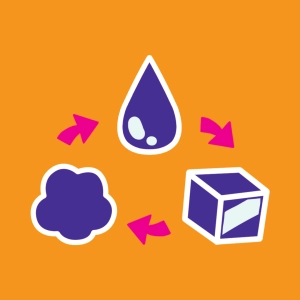 3 states of water
3 states of water
Water is one of those rare substances that can be easily observed in all 3 states of matter …solid …liquid …. and gas.
It is in its solid form at temperatures lower than 0° Celsius (…) liquid when the temperature becomes positive (…) and gaseous above 100° Celsius.
We need to look for explanations at the molecular level.
At low temperatures, strong bonds join the molecules to one another to form a compact and geometric network.
(…) This is a crystal (…)
When the temperature rises, and attains a level of 0°Celsius, the bonds holding the molecules together become weaker.
We observe a change of state. Liquefaction begins.
(…)
As long as any ice remains, the temperature of the water remains at 0°.
We therefore do not know in which state we will find water at 0°. It could be completely solid (…) or completely liquid (…) or, more often, a mixture of liquid water and ice.
(…)
Once all of the ice has melted, the temperature of the water becomes positive.
The heated water stores energy and the temperature continues to rise. The water molecules become more and more agitated, and move apart until they are no longer bonded to one another at all.
(…)
The water is in the process of vaporizing.
(…) Note that water vapor, like many gases, is invisible.
The water reaches 100°Celsius and will remain at that temperature for as long as any liquid water remains.
The molecules of a gas move about freely and cover great distances before colliding with one another or with the walls of the container.
This is why a gas does not have a fixed volume. It occupies all available space.
It is only after the complete vaporization of the liquid water that the temperature can again begin to mount.

Discover EduMedia for free
The interactive encyclopedia that brings science and math to life in the classroom.
Over 1,000 resources





